Henry
spending too much on rocks
 
Member since January 2013
Posts: 452
|
Post by Henry on Nov 17, 2017 15:18:59 GMT -5
Hello everyone. Can someone please explain the term "enhydro" in layman's terms. Can I make an assumption it is water in stone? And a few questions:1)Specifically in quartz and chalcedony based rocks? 2)Is the H2O really that old? 3)If so, you figure the water molecules would break down over time, or leak out through microscopic holes and cracks? This is the first time I ever encountered this type of terminology...phenomenon..anomaly. Thanks!  Henry |
|
Deleted
Deleted Member
Member since January 1970
Posts: 0
|
Post by Deleted on Nov 17, 2017 23:59:35 GMT -5
Yes, it is water trapped in a void within a stone. Some trapped water is likely as old as the crystal the crystal itself. I say likely, because (as you mentioned) some stones have some porosity that might allow water to infiltrate over time. Damp conditions underground or underwater would tend to stop water migration once the piece was saturated.
The enhydro features tend to be most visible (and collectible) when the pocket is not completely filled, but contains an air bubble (and occasionally something else like petroleum) that moves when the stone is tipped.
There are many more stones out there containing water that have surface-reaching open formation veils and fractures that allow water to enter more easily (and eventually evaporate, once removed from damp conditions underground).
|
|
jamesp
Cave Dweller 
Member since October 2012
Posts: 36,602
|
Post by jamesp on Nov 18, 2017 3:40:26 GMT -5
Enhydro 's are common in low land areas like Florida and south Georgia. Where rocks are silicified by mineral rich ground water leaching out of diatomic limestone. I tried tumbling this enhydro but the tumble breached it. It is pure chalcedony. 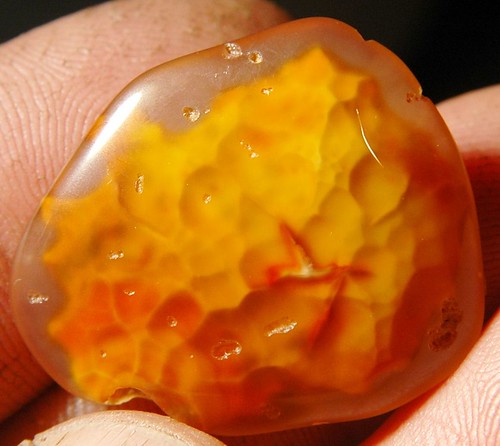  Typical walls of an enhdro container, all chalcedony www.flickr.com/photos/67205364@N06/20005915764/in/album-72157657275043346/Hundreds of enhydro pockets in this silicified coral. Break this material with a hammer and water drips out of the break. Captured in the druzy's. This rock needs to be pressured washed as the pockets are packed with tumbling abrasive. About all silicified coral and silicified ocean bottom(chert) down this way has water pockets throughout. 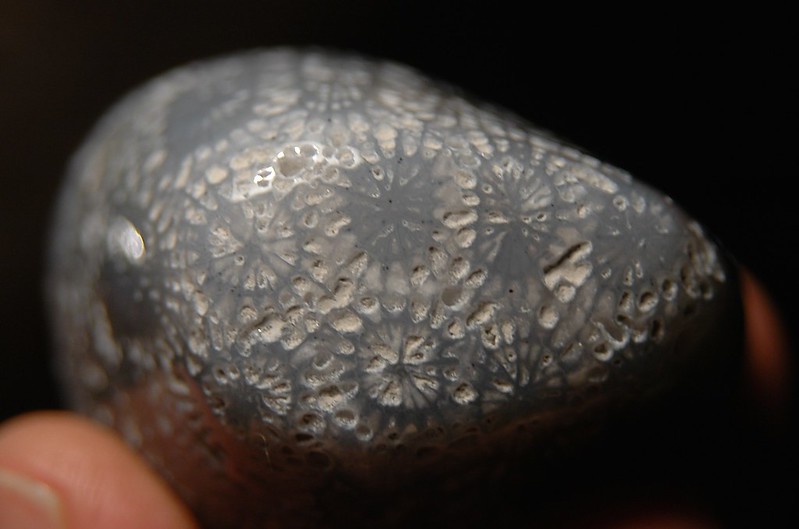 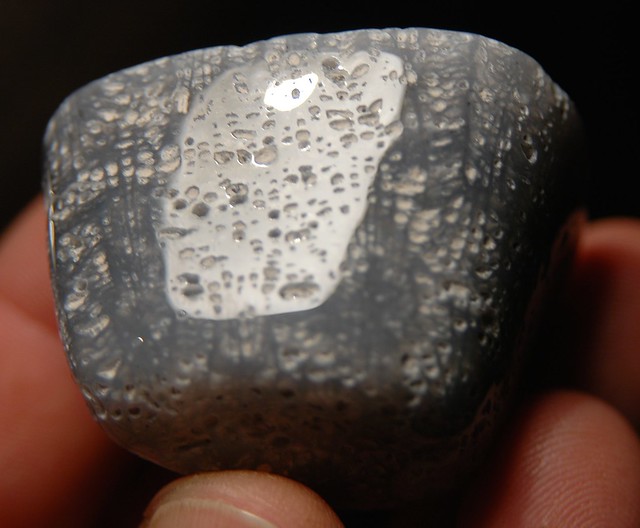 Many times these pseudomorph 's are full of water and/or wet clay: 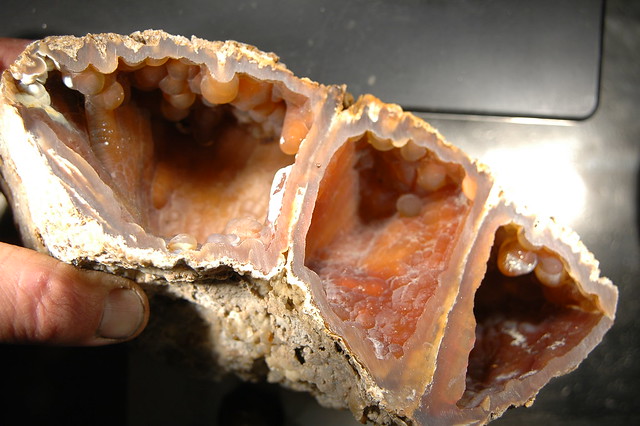 Crazy coral collector friend had his family drink the prehistoric water once just to say they did lol. |
|
|
|
Post by fernwood on Nov 18, 2017 6:50:08 GMT -5
Great explanation. Very interesting.
|
|
|
|
Post by fantastic5 on Nov 18, 2017 8:40:19 GMT -5
I had one nice enhydro crystal that I found in a quartz point in S Carolina. It had a bubble so you could rotate the crystal and watch the bubble move (like a level). I had the mistake of leaving it outside and when the water froze in the winter, it fractured the crystal.
I've also found a small geode in Tennessee that when I opened it, it was full of petroleum. That was a real surprise. The quartz crystal lining inside has a rainbow sheen, like oil on water. I keep that one indoors and haven't washed it.
|
|
|
|
Post by amygdule on Nov 18, 2017 13:09:06 GMT -5
At the Oregon Coast we occasionally find agatized 'clam bellies' that will have an air bubble in them that floats around. Here's a picture of one that has been kept dry for many years and still has some water in it. 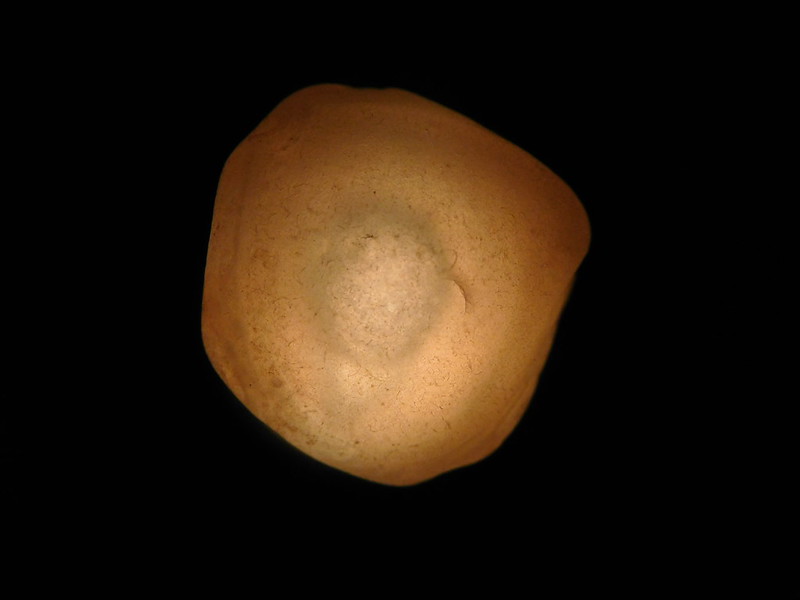 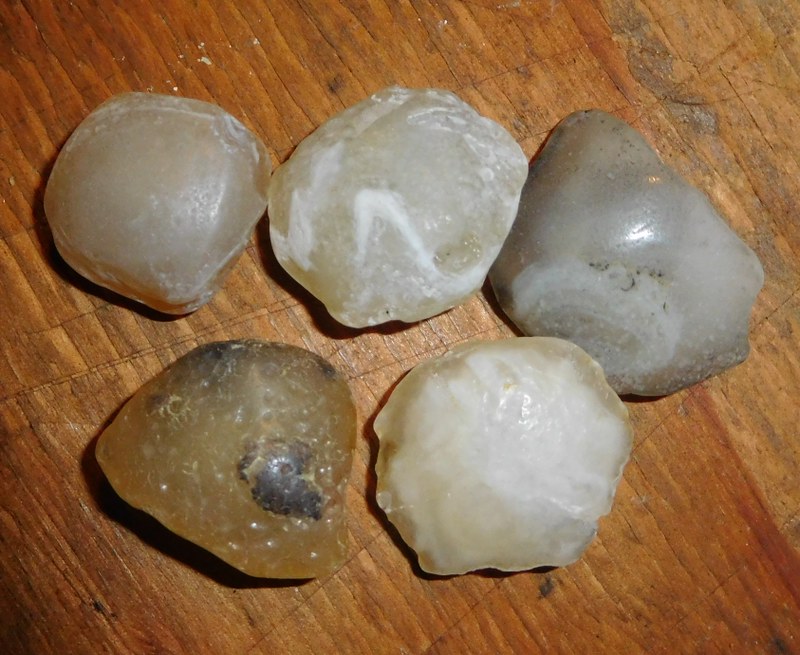 |
|
Henry
spending too much on rocks
 
Member since January 2013
Posts: 452
|
Post by Henry on Nov 18, 2017 16:42:16 GMT -5
Thanks everyone, for the information! Just a quick theoretical question: The water is em...most likely....(poor choice of words. sorry)from the time the rock was formed? Or is that a rarity? Or there is no actual way of telling, as in the aforementioned, water seeps in or out of microscopic pores, during the eons?
|
|
fishnpinball
Cave Dweller  So much to learn, so little time
So much to learn, so little time
Member since March 2017
Posts: 1,491 
|
Post by fishnpinball on Nov 18, 2017 16:49:10 GMT -5
Great info here. I am still hoping to find some of the various varieties of quartz including enhydros and phantoms. Someday maybe.
|
|
Deleted
Deleted Member
Member since January 1970
Posts: 0
|
Post by Deleted on Nov 18, 2017 18:01:49 GMT -5
The water is em...most likely....(poor choice of words. sorry) from the time the rock was formed? Or is that a rarity? Or there is no actual way of telling, as in the aforementioned, water seeps in or out of microscopic pores, during the eons? Depends on the porosity of the stone. In some, such as agate, the water can be leftover from the formation and gel "desiccation" process. Personally, I think agate would be more prone than quartz crystals to having water and other fluids seep into internal voids, just because it takes up dyes easier. However, even for agate that has been underground for all of its existence, I would expect there to be relatively little migration due to quickly stabilizing with moisture already in the somewhat damp surrounding subsurface environment (even in deserts) that would tend to minimize or block movement of water. For agate, and some other stones, that is exposed to drier surface conditions, then there is more opportunity for evaporation and reinfiltration if the rock alternates between being submerged and allowed to air dry (sort of like a sponge that is wetted once per day, new water is going to migrate throughout). Some paleo-geologists and paleo-climatologists have done work extracting water and air from enhydro inclusions in hopes of getting some data on ancient atmospheres. I haven't read many of the papers beyond abstracts, but suspect there would be a large number of variables to consider when using data from liquid or gas from such inclusions (Does the trapped gas represent an ancient atmosphere or merely gases from inside the ancient Earth? Is the trapped water representative of ancient surface water, or does the water more reflect chemistry from deep geothermal activity?). |
|
|
|
Post by HankRocks on Nov 18, 2017 20:43:57 GMT -5
Wegner's has a Phantom Quartz mine in Arkansas although I have never dug there. They have lot's of big plates of the Phantom crystals in the yard at the Shop which is about 6 miles from Mt Ida. Have seen some nice Phantom Quartz specimens from that area in Arkansas. There is supposed to be an area somewhere on the shore of Lake Ouachita where Enhydro Quartz Crystals have been dug. The whereabouts of which remains elusive to me. Have also collected Phantom Calcite crystal in the Terlingua District of Big Bend. Link for Wegner's; www.wegnercrystalmines.com/DigYourOwn.html |
|
Henry
spending too much on rocks
 
Member since January 2013
Posts: 452
|
Post by Henry on Nov 19, 2017 0:47:32 GMT -5
Thanks for the info. "rocks2dust".  |
|
jamesp
Cave Dweller 
Member since October 2012
Posts: 36,602
|
Post by jamesp on Nov 19, 2017 4:33:58 GMT -5
Silicified coral with pockets like these are usually filled with water. I remember this one in particular. I am not sure if that would classify it as an enhydro. You can see druzy crystal formations in the water holding pockets. You could hear it explode in the heat treatment oven lol, it had seen 600F. I do hold the oven below boiling point say at 200F for a couple of days or longer to hope the water dries out. But pieces like this with well sealed water pockets always fracture or explode in the oven. It did not matter if they broke into several chunks as they were going to be tumbled. @rocks2dust described the process of this coral well "the water can be leftover from the formation and gel "desiccation" process. Personally, I think agate would be more prone than quartz crystals to having water and other fluids seep into internal voids 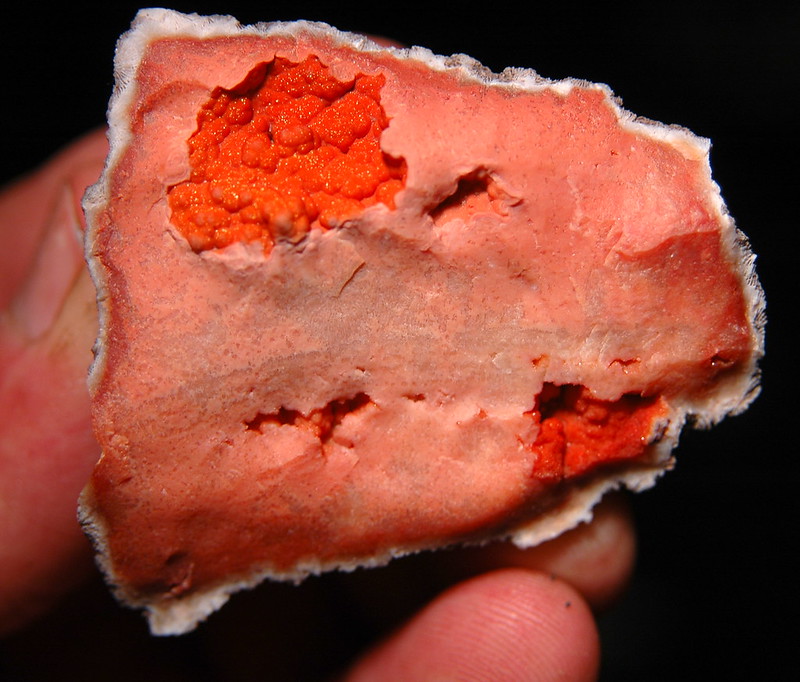 |
|
jamesp
Cave Dweller 
Member since October 2012
Posts: 36,602
|
Post by jamesp on Nov 19, 2017 4:50:37 GMT -5
This large coral was sawed into many pieces. It was full of water. Acid water flowing thru diatom rich limestone can make a lot of dissolved silica. The spot this was found at was in silica rich clay and for some reason conditions were favorable for these strange partial silicifications. 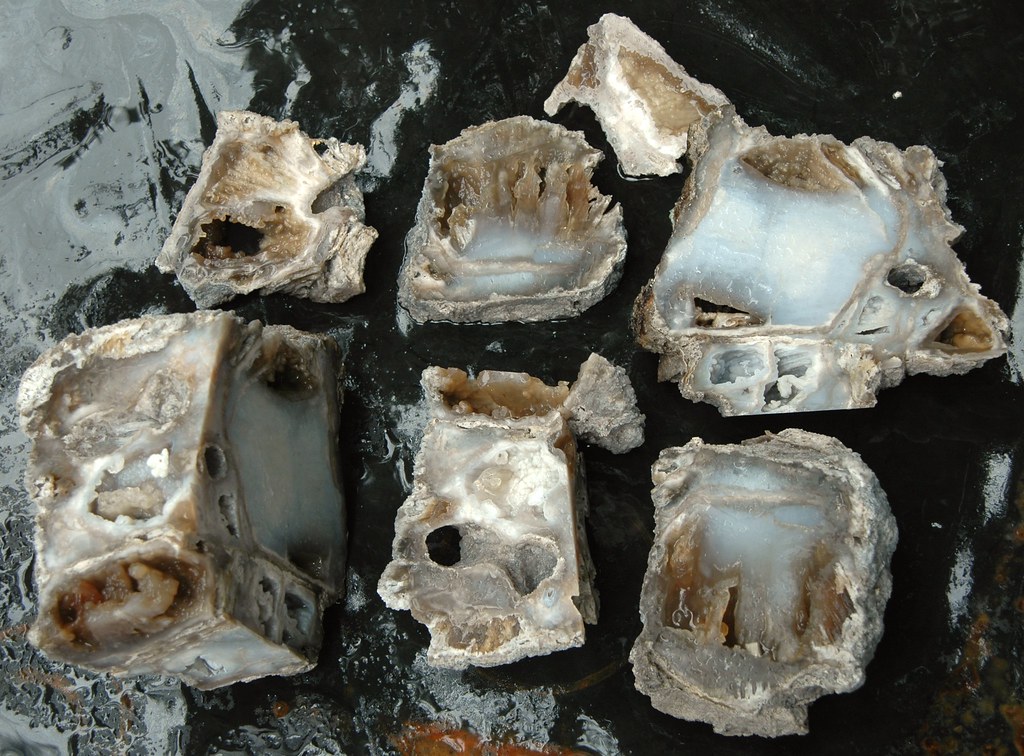 |
|
|
|
"Enhydro"
Nov 19, 2017 4:58:57 GMT -5
via mobile
Post by Garage Rocker on Nov 19, 2017 4:58:57 GMT -5
I like those red druzy pockets, jamesp. Don't drink the water though. |
|
jamesp
Cave Dweller 
Member since October 2012
Posts: 36,602
|
Post by jamesp on Nov 19, 2017 5:16:45 GMT -5
Savannah River chert is a mass chert exposure well above the water table. 500+ pound boulders sitting on hot high ground are full of water pockets of all sizes. Must be the most consistently wet rocks due to tiny pockets. If thrown in a fire it makes quite a show shooting projectiles in the form of chips. The water must be totally mineral rich because it goes color wild when heat treated. Bryozoan chert and close ups of water pockets: 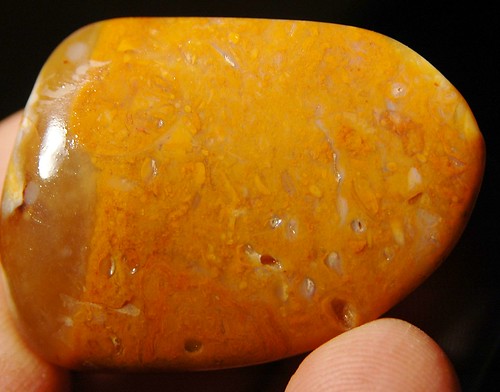 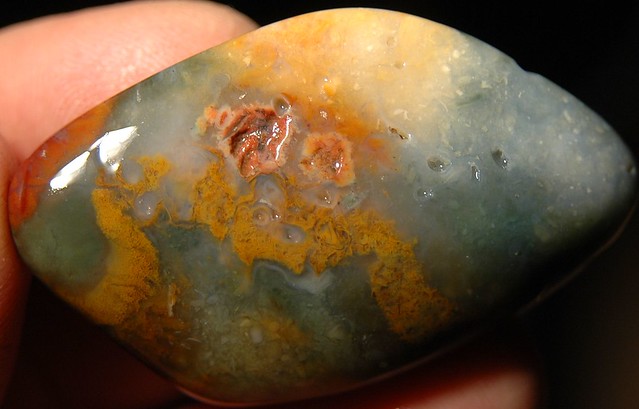 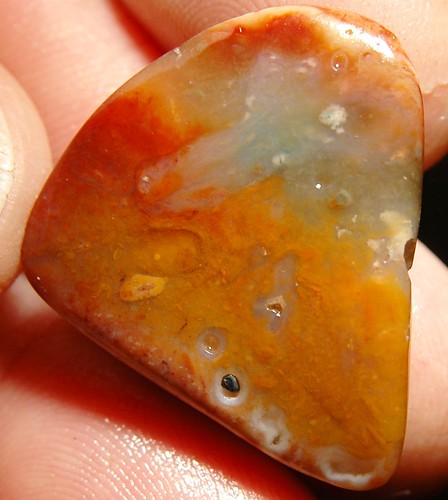 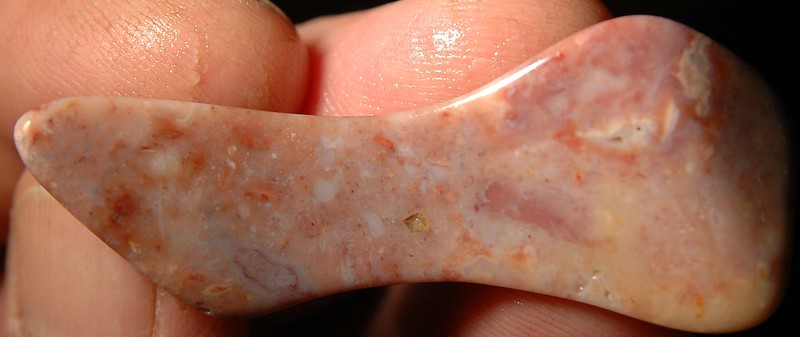 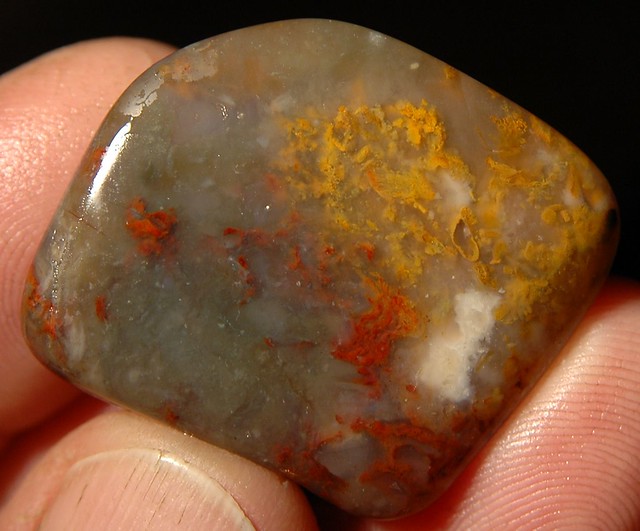  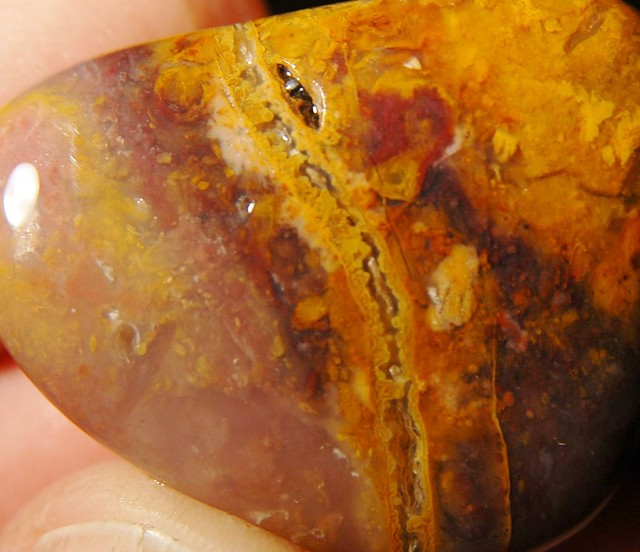 |
|
jamesp
Cave Dweller 
Member since October 2012
Posts: 36,602
|
Post by jamesp on Nov 19, 2017 5:19:43 GMT -5
I like those red druzy pockets, jamesp. Don't drink the water though. Fountains of youth and virility  Garage Rocker Garage Rocker. Probably iron rich water, might as well call it a substitute for Geritol. Probably perfect for me. Notice how 'coral' colored that rock is. Oddly a lot of petrified coral has that true coral color. Not sure if it is minerals migrated or original. I found the day light photo of that coral, it looks like the color is not jazzed by photo shop 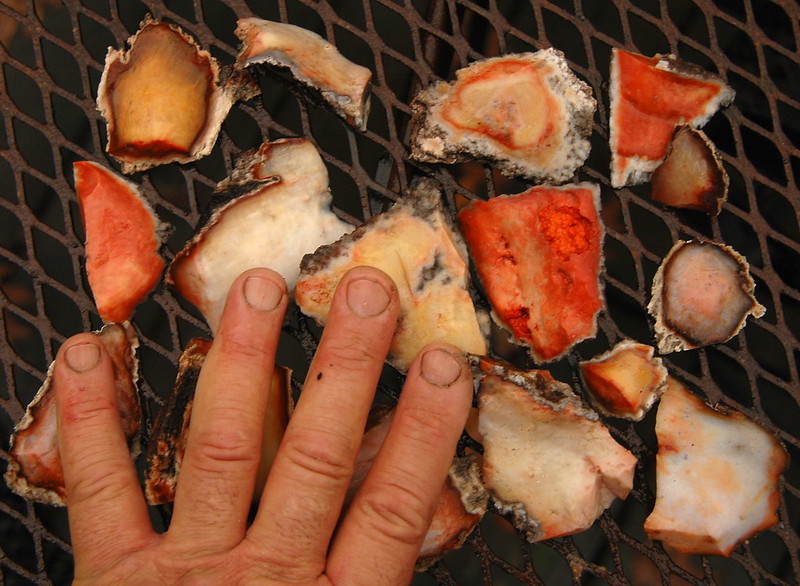 More 'coral' color 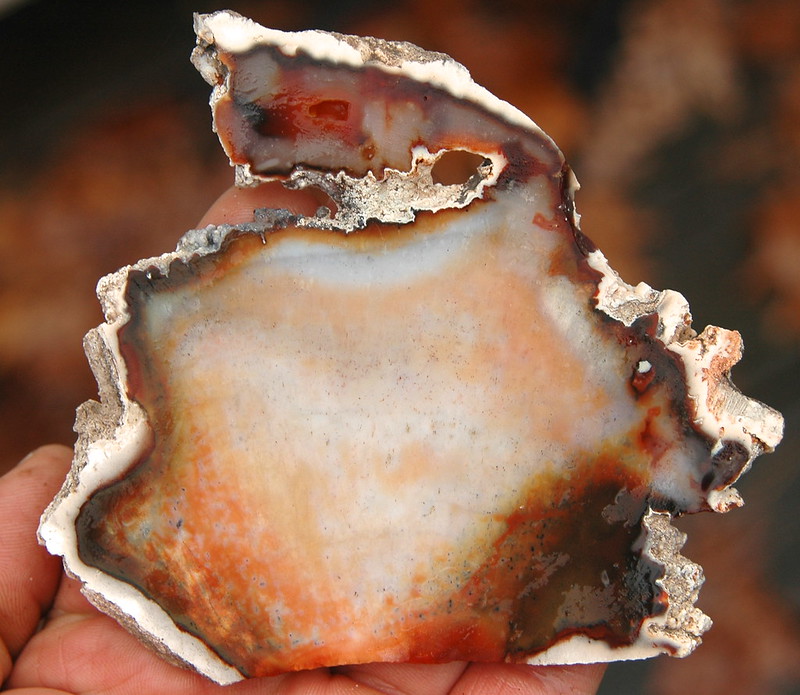 |
|